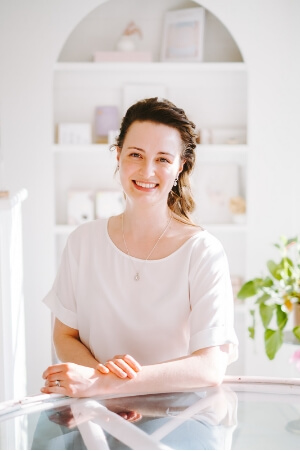I’ve made no secret of the fact that I build websites on WordPress and I recommend this system to all my clients. A huge part (and, to me, the most important part) of your business is your website, which should be updated frequently with new content and maintained with software updates.
I believe in giving my clients ownership and control of their websites, and this starts with WordPress. To me, hand-coding sites from scratch forces my clients to continue to hire me every time they would like to add content to their website (which I don’t feel is a sustainable way for my clients to maintain their website).
In this post, I’m going to chat about why I use WordPress to design and build websites. What you should know before reading further is that WordPress is a content management system (CMS) like Wix, Weebly or Joomla. It gives you a home base (or “dashboard”) to work from so that you can manage your website’s content.
WordPress is Free and Open-Source
You can get a copy of the system for your site by visiting wordpress.org and downloading the latest version. You don’t have to pay anything to download it, and updating the system to the latest version is also free of charge. This is a great advantage when working on a number of websites as well as when starting a website with a limited budget.
The open-source characteristic of the system grants you access to the original code, as well as the ability to modify it. This is a huge asset to developers who wish to edit areas of a website to create a customised solution for a project. This is also a good way to keep custom-coded features from being edited by the website’s owners. Once a designer has created a section of a site, tested it and got it working exactly the way it was intended, our worst nightmare is a client fiddling with it and potentially damaging hours of work.
You can Add Functions and Features by Adding Plugins
Plugins are a way to add specific features to your site without having to code them from scratch. They’re small-ish software programmes that can be used to add everything from an online store to a font to your site.
Using plugins gives you the option to expand the role your website plays in your business. Examples include adding opt-in forms on your site’s pages and setting up the connection between Google Analytics and your site.
You can Edit your Website without Coding
I recommend adding blog posts to a site for improved SEO and for continued relevance, and WordPress makes this easy to do by making the “posts” area separate to the “pages” area on the dashboard.
What this means is that you don’t have to create a new page (or dig into any code) every time you want to add a blog post to your site. You create a new post, save and publish it, and the part of your site that holds the blog content does the rest of the work.
You can also edit the copy and images on your site by navigating to the relevant page – all without having to code.
The System Gives me a Stable Base to Work from
When installing WordPress on a client’s server, I know exactly what I’ll see when the setup is complete. Each basic WordPress installation works the same way and the dashboard looks the same. This means that I can get going immediately instead of learning how a different system operates each time I work on a site.
I also don’t have to “reinvent the wheel” each time I start work on a website as all the basic systems have already been set up. Think of it like an artist’s canvas. Having WordPress allows you to pick up a blank canvas and start painting. Not having WordPress can be likened to making a canvas from scratch each time you want to paint.
Because regular updates are made to WordPress, a website using the system will always have access to the latest secure version (provided the website is looked after properly) which helps to ensure optimal functioning of your website.
Conclusion
I do understand that the apparent complexity of WordPress may be a stumbling block to using the system for your own site. But I can help with that too. As part of my service, I train you to use your website so that you can create blog posts, edit copy, add images and continue to make your website gorgeous.
This was a blog post written in 2016 when I and my business were in a very different place, physically and mentally. This was written from the perspective of someone who was a few months into running her own business in a different country from where I now live.
I have the experience of running a business, as well as 4 years of working at a marketing agency behind me, and thus my perspective has changed somewhat. I am sharing my older blog posts (from a previous iteration of my website) as a way to have a record of my writing online again.
Melissa De Klerk

Website Designer and Developer, tea lover
I am the owner and founder of Melissa Helen Co.
I have been a web designer and developer since 2015 and have worked with Wordpress since 2008. Since I started my business in 2016, my interests have revolved around business strategy and how that influences their websites.
I design and build websites for small to medium-sized businesses, have many years of branding experience, and have worked in marketing agencies.
You can send me a message me through my contact page, and find me on social media by clicking the buttons below.
